Butterflyfishes of BIOT Stamp Issue 8.12.20
On 8th December 2020, the British Indian Ocean Territory Administration released a set of six stamps and First Day Cover featuring species of Butterflyfish found within the British Indian Ocean Territory.
Many of these species feed on coral and therefore are threatened by climate change associated coral mortality. They are also under pressure from harvesting for the aquarium trade. Butterflyfishes have been known to reside in the BIOT for many years. They have thin teeth and protruding mouths which enable them to prey on small organisms that are difficult for most other type of fishes to access.
Indian Butterflyfish
Indian Butterfly fishes are usually located between 22-80 metres below surface. However some Ind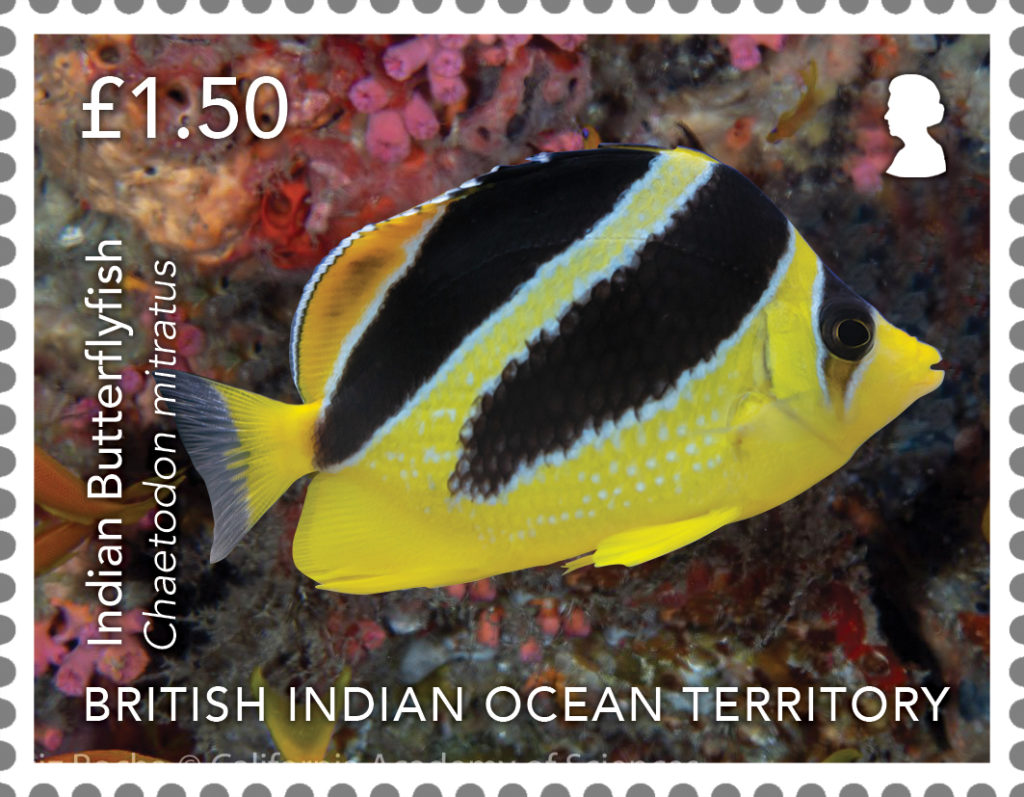 ian Butterflyfishes have been located at much greater depths.
ian Butterflyfishes have been located at much greater depths.
The Indian Butterflyfish can vary in length up to 14cm.This Indian Butterfly is darker yellow, with the centre of the body being pale yellow and two diagonal broader black bands on the side. There is an additional black band across the eye. All bands are outlined in the colour light blue. They can be found in outer reef slopes and drop-offs with growth of black corals and sea fans, with individuals also reported from deep rubble areas (Allen 1980, G.R. Allen pers. comm. 2006).
Teardrop Butterflyfish 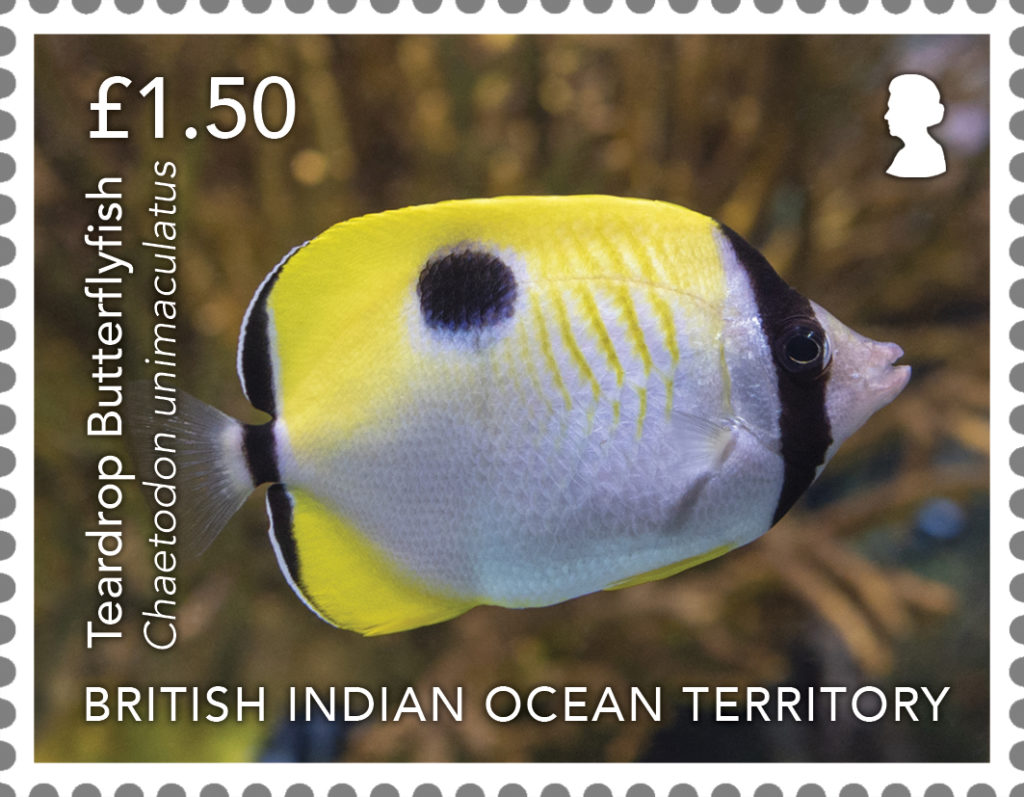
Teardrop- These are large shy butterflyfishes varying in length up to 20cm. They can be located between 1-60 metres below surface and feed on various types of corals. Animals that feed almost entirely on coral are called corallivores. They are closely related to the Yellow Teardrop. This Teardrop Butterflyfish has a snout and strong jaws. This Teardrop Butterflyfish’s back, dorsal fins and pelvis are coloured in bright yellow, the edge of its anal and dorsal are outlined in the colour black finished with an transparent tail. A shape of a Teardrop is located on the upper body in the colour black giving it its infamous name.
Raccoon Butterflyfish
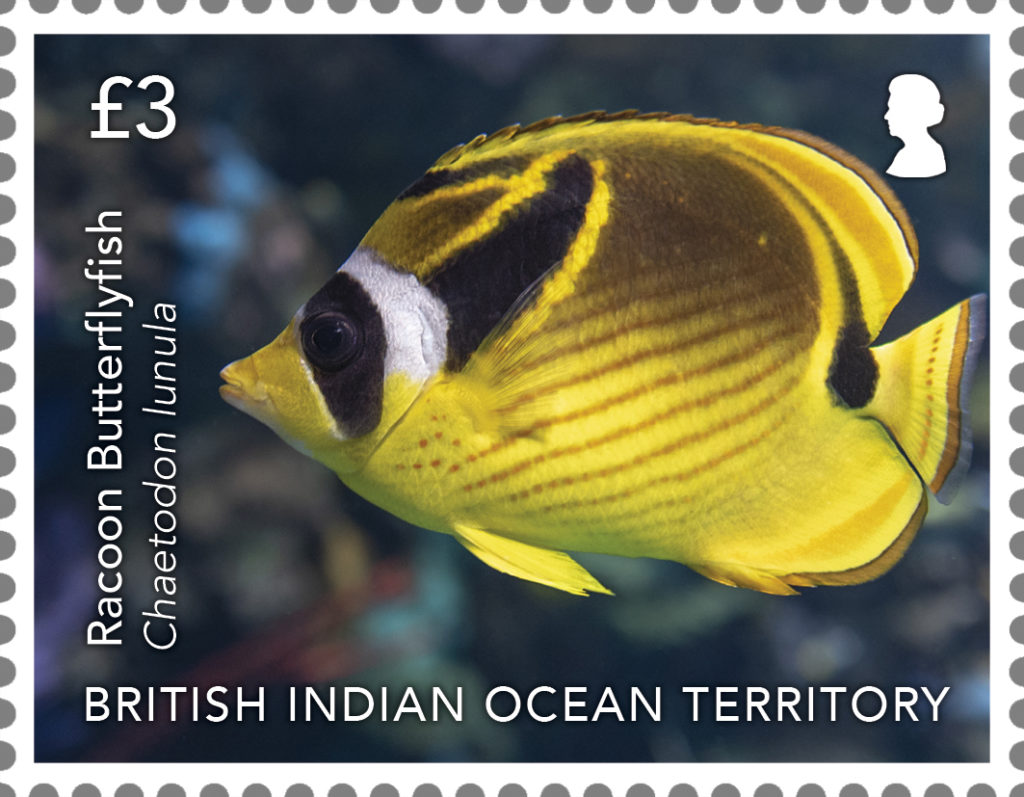
Raccoon-These large nocturnal butterflyfishes are known for their big eyes. They can vary in length up to 20 cm. Around their eyes, are a series of black bars and white bands which gives the Racoon Butterflyfish its distinctive mask. The Racoon Butterflyfish has a golden brown and yellow coloured body and black stripes.
Scrawled Butterflyfish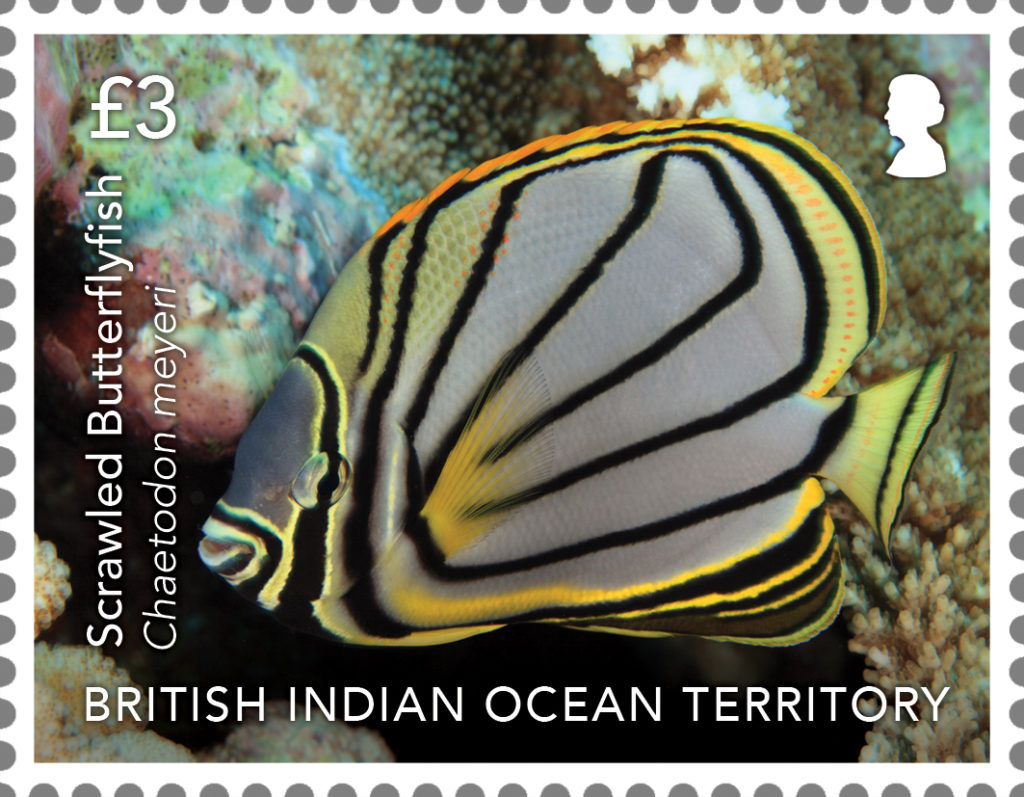
Scrawled- These butterflyfishes can be found up to 30 metres below surface. They have a white centre and series of black curved and straight lines. Black bars outlined by the colour yellow are across the eye and around the mouth . Interesting fact: this species feeds on coral polyps therefore they have a more specific diet than other species here. Adults can be found alone or in pairs.
Melon Butterflyfish
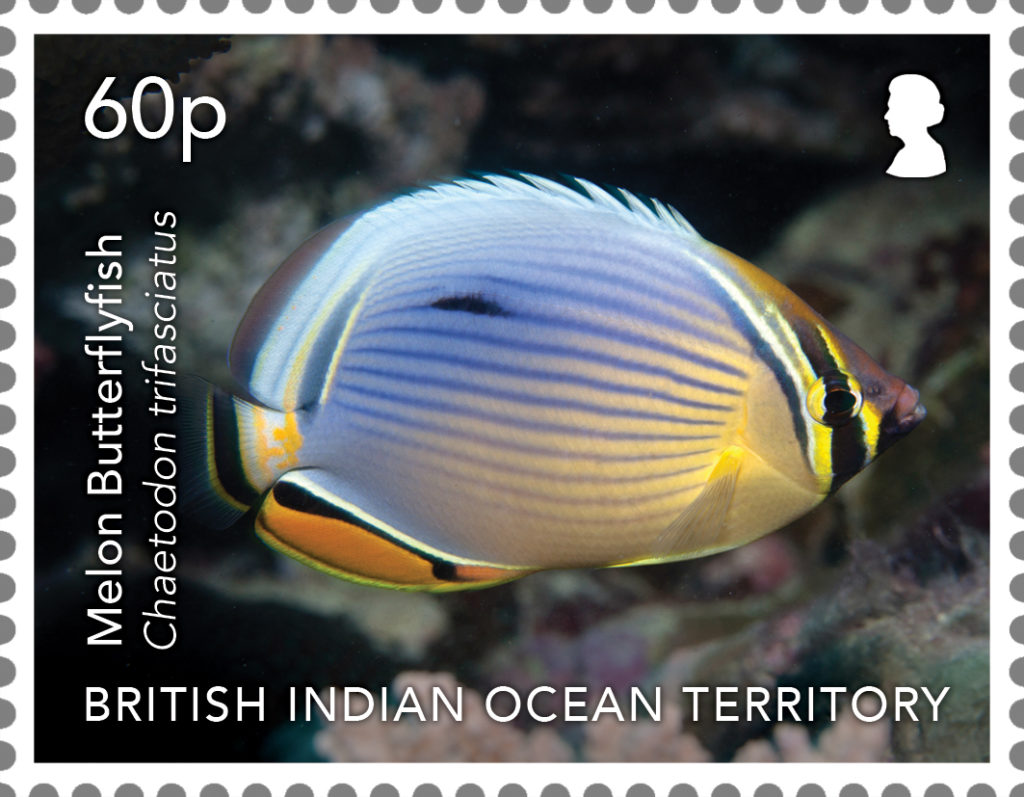
Melon- These butterflyfishes have strong gradient of blue and orange, accompanied by dark blue horizontal lines. Black bars covers the jaw and across the eyes, outlined by the colours yellow and white. Melon Butterflyfishes can be located up to 20 metres depth below surface. They can vary in length up to 15 cm.
Pennant Coralfish
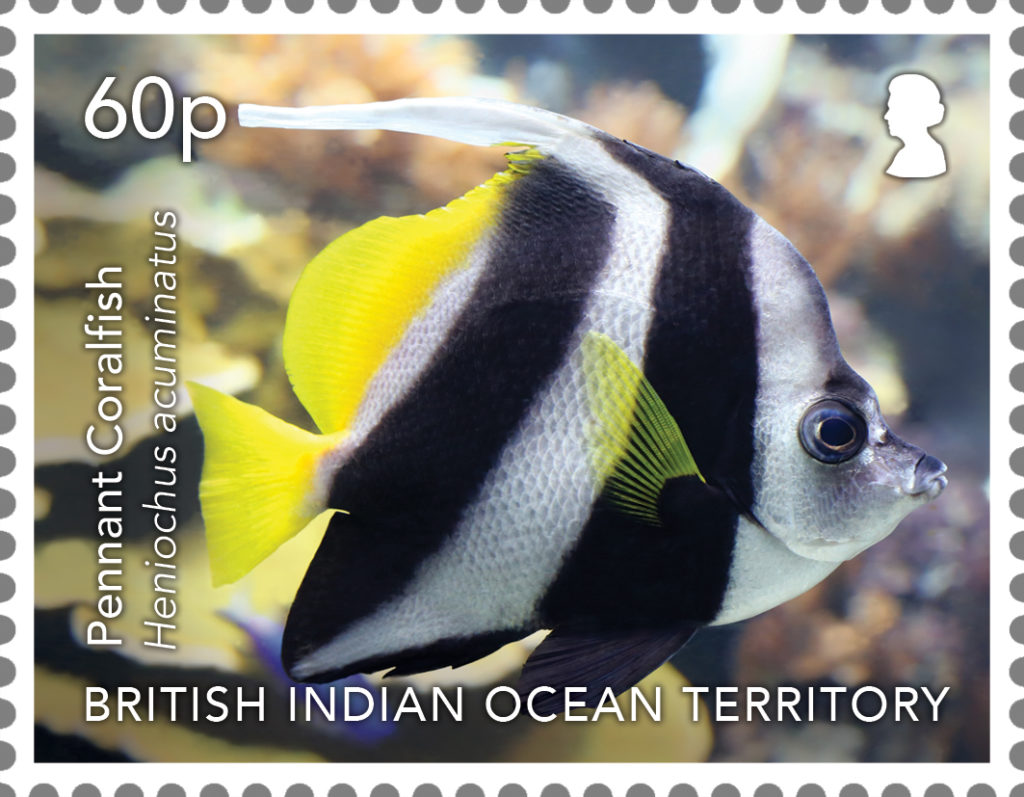 Pennant- These fishes vary in length up to 18cm. They are usually located up to 75 metres depth below surface. They are easy to recognise due to their vertical black bands extending across their bodies against the white background. This appearance is accompanied by yellow fins and tail. The long dorsal elongated into a pennant gives this Coralfish its infamous name.
Pennant- These fishes vary in length up to 18cm. They are usually located up to 75 metres depth below surface. They are easy to recognise due to their vertical black bands extending across their bodies against the white background. This appearance is accompanied by yellow fins and tail. The long dorsal elongated into a pennant gives this Coralfish its infamous name.

